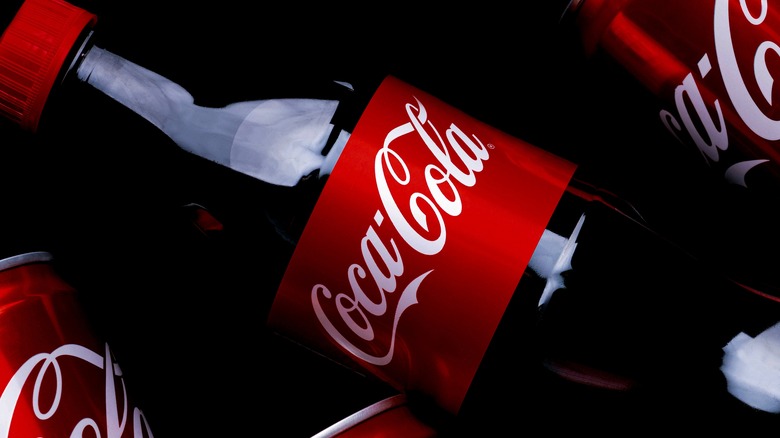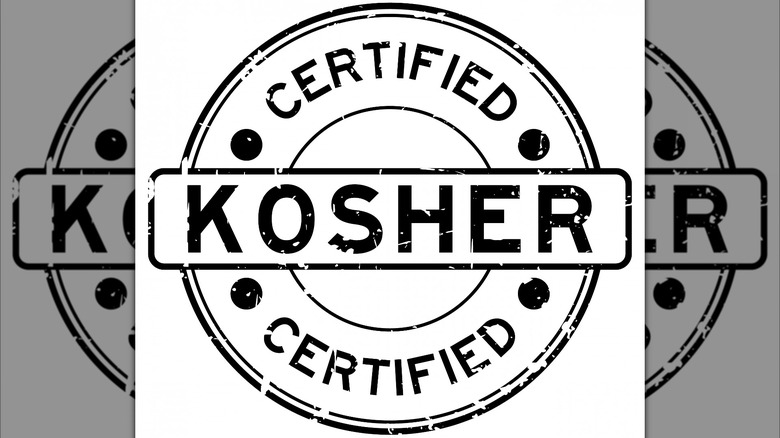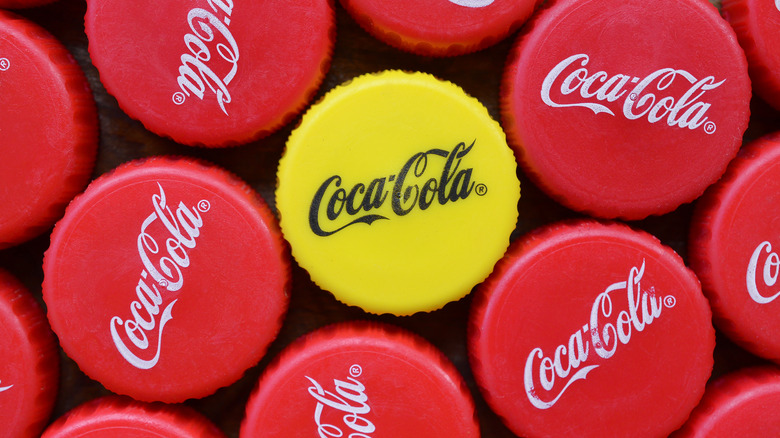The Journey Coca-Cola Took To Become Kosher
When it comes to iconic food brands, none is more ubiquitous than Coca-Cola. Since skyrocketing to popularity at the turn of the 20th century, it has played an important role in pop culture, shaped the direction of the beverage and marketing industries, and even had an influence on how we view Santa Claus. But another, less discussed impact Coke has had is how its dedication to mass popularity led to the modernization of the kosher certification process for Jewish consumers.
As Science History Institute details, Coke had already risen to massive levels of popularity by World War I, around the same time large numbers of Eastern European Jewish immigrants began pouring into the United States. Looking to assimilate with American culture, younger Jews began drinking Coca-Cola, and the ever-growing soda company was happy to market to them and expand its sales. Due to its growing popularity in that community in the 1930s, some Jews asked if the drink was kosher; Tobias Geffen, an Orthodox rabbi in Coca-Cola's home city of Atlanta, began fielding questions from rabbis all over America.
The only way for Geffen, or any inspector, to know if Coke was kosher was to look over its ingredients, which are one of the most closely guarded recipes in the world. As The Daily Meal notes, Geffen was personal friends with Coca-Cola's corporate attorney, and he was able to persuade the company to allow the rabbi to confidentially inspect the ingredient list.
Cola Keeping Kosher
After closely examining the list of ingredients, Geffen determined that Coca-Cola could not be considered kosher; there was a small amount of glycerin contained in the product that forbid such certification. As Science History Institute explains, glycerin is not a naturally occurring substance, but a byproduct of the soap making process, derived from fats and used to diffuse flavor.
Since some of the fats it was derived from included animal fats from pigs and cattle that had not been slaughtered according to kosher rules, and intentionally added (albeit in a miniscule amount), Geffen ruled that the product was not safe for consumption by Jews keeping kosher.
Fortunately for Jewish cola fans, however, a solution was devised. Since glycerin could also be made from plant-based fats, and Coca-Cola didn't want to lose their Jewish customers, a deal was worked out with the company's glycerin supplier — Procter & Gamble — for glycerin derived from cottonseed and coconut oils. Once substituted, around 1935, Coke earned Geffen's approval for Jewish consumers to drink the product guilt-free.
Coke and P&G's willingness to adjust their ingredients to cater to specialized dietary practices, and Geffen's meticulous analysis of the processed beverage's ingredients, was far ahead of its time. It also set the stage for modern kosher certification standards, and helped popularize the idea of getting kosher certification for popular brands. Today, the BBC notes that 41% of packaged foods in the U.S. have achieved kosher certification.
Kosher for Passover
While Coke and Diet Coke have been kosher for decades, the company did hit a bump in the road in the 1980s. As reported by The Kitchn, Coca-Cola changed its recipe in 1980, substituting cane sugar-derived sucrose for high-fructose corn syrup. While this doesn't present a problem in day-to-day kosher diets, it does create problems at Passover, when Jewish restrictions become stricter for eight days, banning the consumption of certain grains and their byproducts, including corn.
In another effort to avoid alienating loyal customers, the Coca-Cola company came up with a solution. Each year, a few weeks before Passover, the company begins producing a limited number of bottles made with sucralose — used in the often lauded Mexican-made Coke. These bottles are designated kosher for Passover and marked with yellow caps, then sold in select markets with high Jewish populations so consumers can continue to satisfy their pop cravings during the holiday.


